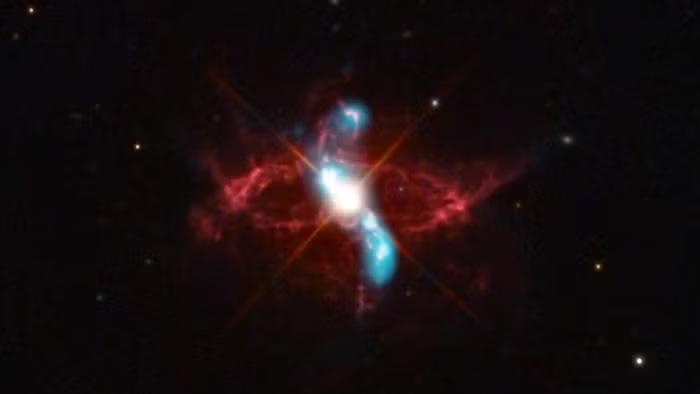
This summer, a dead star in a nearby galaxy flared back to life in an abnormally brilliant but brief nova, providing astronomers a fleeting glimpse of a mysterious class of stellar duo.
In May, an array of asteroid-watching telescopes on Earth spotted an outburst nestled in the Small Magellanic Cloud (SMC), one of the Milky Way's closest neighbors which is home to four of only six known binary star systems featuring a white dwarf and a hot, young star surrounded by a disk of material. Astronomers expect such binaries to be common across the universe, yet only a handful of members have been cataloged so far.
"This is only the second time that we have observed such a bright outburst from this type of white dwarf binary system," Thomas Gaudin, a graduate student at the Pennsylvania State University who led the discovery, said in a recent news release.
Following the initial flare in the SMC, observations with ground- and space-based telescopes revealed the outburst was indeed from one such rare binary star system, known to astronomers as CXOU J005245.0-722844. Despite being cataloged by the Chandra X-ray telescope close to two decades ago, precious little is known about the system.
Related: A rare nova ignites a 'new star' in the sky
The white dwarf, which is the corpse of a once-massive star, was coated with so much material from its companion star that it exploded like a gigantic hydrogen bomb. Although the outburst was "superluminous," it lasted for just under two weeks, according to a study published last month in the journal Monthly Notices of the Royal Astronomical Society.
By June 12, the system fell below the detection threshold of the Neil Gehrels Swift Observatory and other telescopes, suggesting the outburst had concluded, the study reports.
"Most novas are events that reach moderate luminosities and decay over the course of several weeks," Gaudin said in the statement. "This nova is strange not just in its extremely luminous behavior but also in its short duration."
Forthcoming follow-up observations could reveal nuances in the underlying physics that cause such ultraluminous yet brief outbursts, astronomers say.
"But this is an important first step to getting a better understanding of these systems and potentially why we have not seen as many as we expect," said Gaudin.
Meanwhile, astronomers and skywatchers around the world continue to gaze toward the Corona Borealis constellation, where another long-dead star is expected to erupt into a powerful, once-in-a-lifetime nova any day now. Once "alive," the guest star will adorn our night sky for about a week before vanishing into the darkness.







